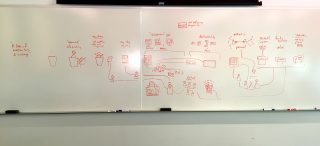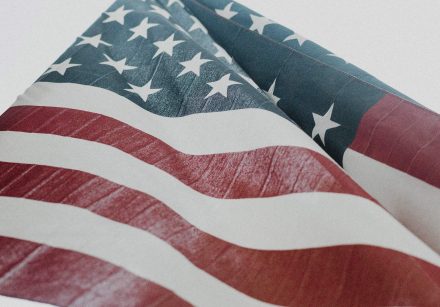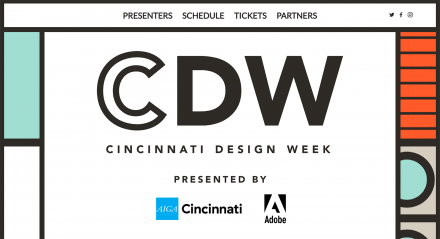The Medium is the (Political) Message

This week, learners in the xdMFA Systems Design course read and discussed Marshal McLuhan’s “The Medium is the Message” which was written in 1964. McLuhan, Marshall. “The Medium is the Message,” In Understanding Media: The Extensions of Man, 203–9. Cambridge, MA: The MIT Press, 1994.While this article is well-known in Communications, English, and some Design programs, it’s best when applied. So, instead of reading McLuhan as a time capsule, we applied it to the modern political climate in the United States as part of our semester focus on politics. The result was a deep conversation about how political messages are communicated… not by what the words and images say but by what the medium communicates.
A few points that came from the discussion:
- T-shirts, yard signs, buttons that promote a candidate are very personal. The person who wears or uses one of these shows a direct endorsement to the candidate and/or their campaign. This is a genuine message.
- Speeches by a candidate using a teleprompter suggest they are cautious and calculated with their message. It may be an in-person address, but it’s not completely personal.
- Speeches by a candidate not using a teleprompter feel more genuine. Regardless of the message, these feel unfiltered and more “direct from the candidate.”
- Biographies written by candidates are a “my story, my way” way of telling their side of the story. The group commented it’s almost a requirement these days to have a book on the shelves if you’re a candidate.
- News has become “news.” Money, advertising, media conglomerates, and other entities color the news where its no longer seen as entirely objective.
- Wikileaks, Edward Snowden’s Freedom of the Press Foundation, and other “leaks and whistleblowers” are regarded as genuine because they seem less influenced by money and because they have risked harm to publish their messages.
- Social media is very genuine because people directly publish their own messages. These messages come at risk to the sender because it’s their own voice and are “worn” like a t-shirt.
The discussion went on for over an hour. This systems mapping process clarified McLuhan’s paper and also gave context to the designed things produced to get candidates elected. It was also a reminder that what to design is just as important as how to design. Choose your medium wisely.


